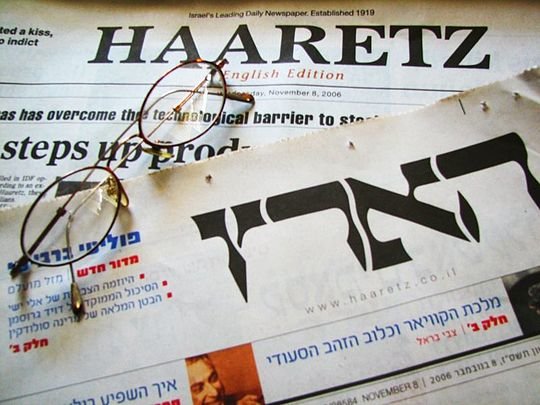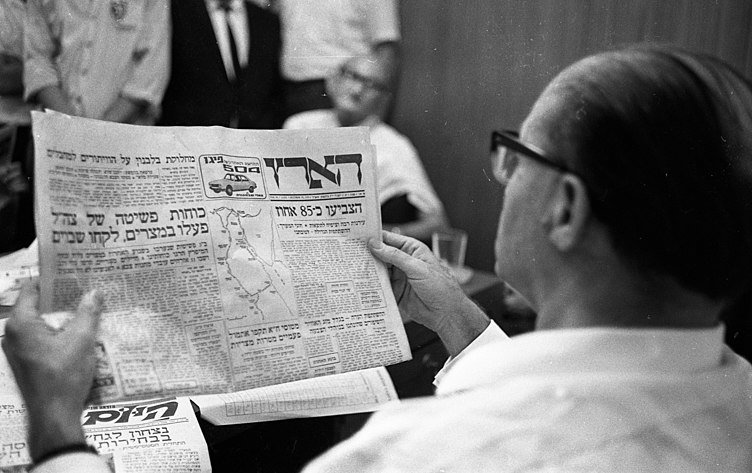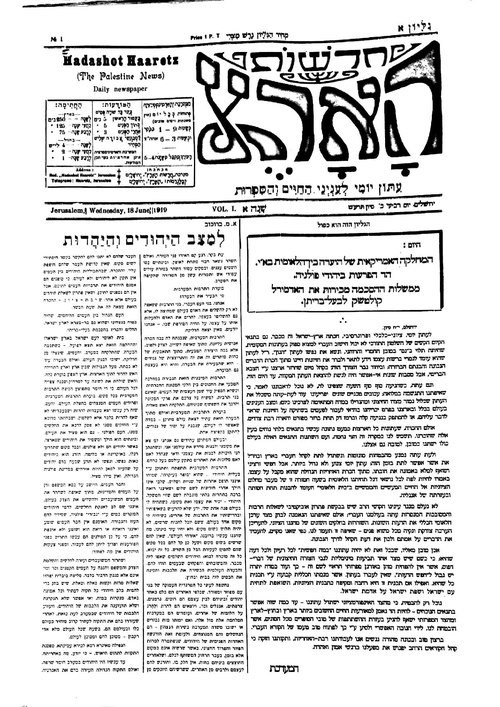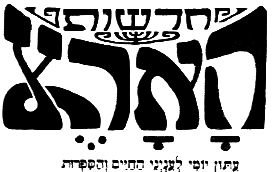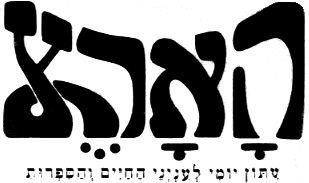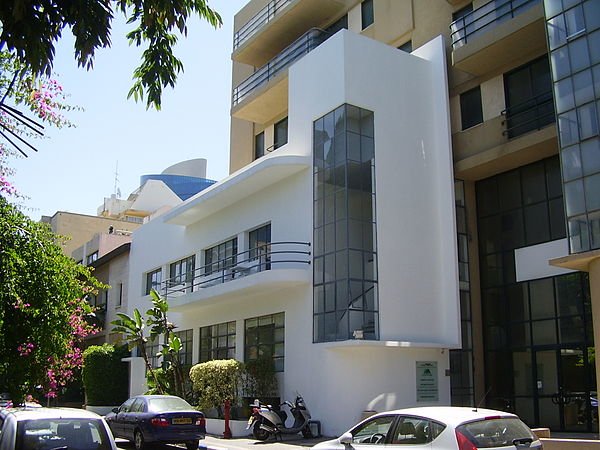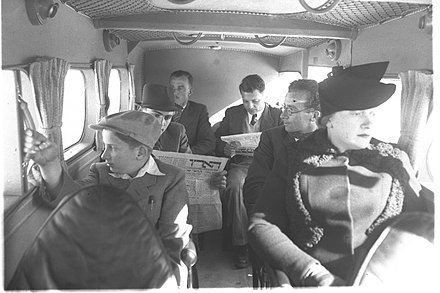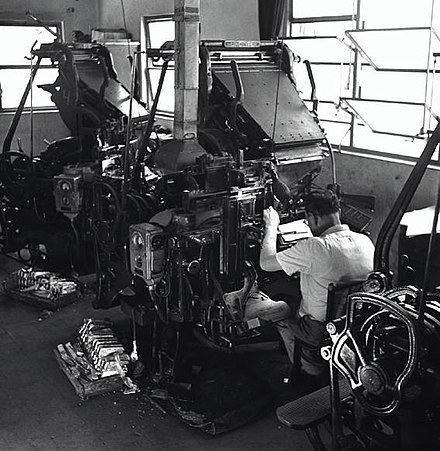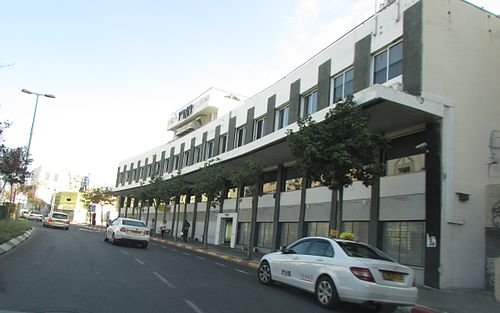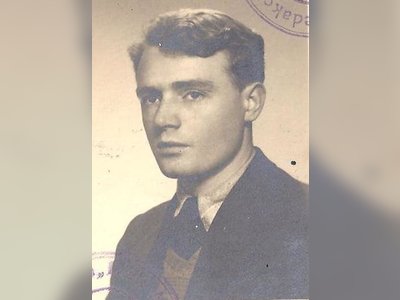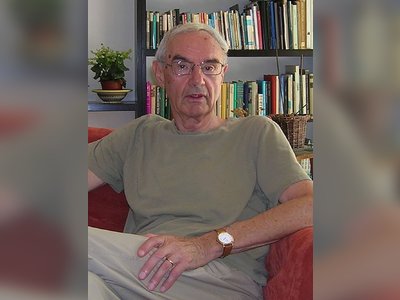"Haaretz: A Chronicle of Israel's History"
Haaretz is a newspaper with a long and storied history, serving as a reflection of Israel's complex and evolving society. From its early days as a modest publication in British Mandate Palestine to its role as a respected source of news and analysis in the modern era, Haaretz has played a vital role in informing and engaging the Israeli public and the international community. Its commitment to journalistic integrity, diverse perspectives, and liberal values has contributed to its enduring significance in the media landscape.
Haaretz, the oldest active newspaper in Israel, has a rich and storied history dating back to its founding in 1918 by Yitzhak Leib Goldberg. The newspaper adopted its current name in 1919, and as of January 2021, it had a weekday circulation exposure of 4% and a weekend exposure of 5.8%. Additionally, Haaretz operates a news website, with most of its content restricted to subscribers since March 2013.
Since 1935, the newspaper was owned by the Schocken family, and in recent years, 40% of the shares of the Haaretz Group, the company that publishes it, were sold to Alfred Dreyfus (20%) and Leonid Nevzlin (20%). In December 2019, the Schocken and Nevzlin families acquired Dreyfus's share.
The current editor-in-chief is Ben Aluf, and the CEO of the Haaretz Group is Rami Guez.
Founding Years:
In response to the British military government's ban on representatives of the Hebrew settlement from publishing a newspaper named "Eretz Yisrael," the government decided to release a Hebrew edition of the British military's newspaper, "The Palestine News," titled "News from the Holy Land – The Hebrew Edition of the Egyptian Military Mission's Newspaper in the Conquered Enemy Land." The first issue was printed in Jerusalem at "L'Aviv Printing" on April 4, 1918. However, the British military censor also rejected this name, and the second issue was named "News from the Land."
After relocating to Cairo in January 1919, the British military government announced the closure of all military newspapers. At this point, Zionist leaders Chaim Weizmann and Nahum Sokolow approached Yitzhak Leib Goldberg with a request to establish a Zionist-nationalist journal. Goldberg accepted the responsibility, understanding that the newspaper would initially operate at a loss.
The editor-in-chief was Dr. Nisan Turbow, and the main contributors were Dr. Samuel Pearlman, Eliezer Ben-Yehuda, and his son, Itamar Ben-Avi.
The British authorities rejected the name "Eretz Yisrael" due to concerns about Arab opposition. When the newspaper began publishing as a journal in Jerusalem on June 18, 1919, it was named "News of the Land – A Daily Newspaper for the Affairs of Life and Literature," becoming the first Hebrew newspaper of the Mandate period.
The newspaper declared itself a Zionist newspaper, although it took care not to provoke the British authorities. The opening lines of its first issue stated, "Eretz Israel is waiting; for now, we refrain from making exaggerated promises and will endeavor to provide the Hebrew public, in Israel and abroad, with what can be provided at this time: a modest daily newspaper that is not large in size but is free, serious, and aspires to fulfill its duty, based on the great responsibility it has undertaken, to be here for all bearers of the banner of our national revival in this critical hour of transition from the dream of Zionism to practical and real life in the 'national home' about to be built under England's auspices and with her assistance. In today's terms, it was a highly literary newspaper, with the number of opinion pages exceeding that of news pages. All the editors were men of letters, and in fact, the newspaper had only one journalist, Rabbi Nahum Ben-Horin, a rabbi from the old settlement, who was well-versed in the affairs of Jerusalem.
In December 1919, the word "News" was removed from the emblem (logo), and the newspaper's official name became "Haaretz." Later, the letters in the emblem designed by Ze'ev Jabotinsky were replaced with the current emblem by letter designer Francesca Baruch. The newspaper had a print run of approximately 1,000 to 1,500 copies. During the holidays of Sukkot and Passover, the printing houses in Jerusalem did not operate, and the newspaper was not published during those times.
Y.L. Goldberg continued to support the newspaper's activities until the summer of 1922. After he ceased his contributions, accumulating losses endangered its existence. The newspaper struggled to survive until it closed at the beginning of November of that year. Concerned that the only independent quality newspaper in Israel would cease publication, Eli Hon, a lawyer, was enlisted to finance its publication.
The management was handed over to a cooperative of workers who revitalized the newspaper on January 1, 1923. They chose a new editor-in-chief, Dr. Moshe Yosef Glueckson, who had previously served briefly as editor during the terms of Samuel Pearlman and Aryeh Leib Yaffe.
Moshe Glueckson was a competent editor with literary and philosophical knowledge, having been a scholar of literature and philosophy before. Under Glueckson's leadership, Haaretz became an intellectual newspaper, with no news published on its front page.
In this context, a competing newspaper, "Davar Hayom," was established by Itamar Ben-Avi, aiming to replace Haaretz as the most influential newspaper in the land of Israel. Less than two months after Glueckson's appointment, "Davar Hayom" declared war on Haaretz, among other things, by halving its price, exactly half the price of Haaretz. "Davar Hayom" also poached senior writers from Haaretz, including Ze'ev Jabotinsky and Uri Kesari.
Itamar Ben-Avi wrote, "Haaretz may be virtuous, but it is not a newspaper, while Davar Hayom may not be virtuous, but it is a newspaper." Whenever "Davar Hayom" had a sensational news scoop, Itamar Ben-Avi would taunt in his headlines, "You can't read this in 'Haaretz.'" While Haaretz supported Chaim Weizmann and Menachem Ussishkin, "Davar Hayom" provided extensive coverage of the criticism by Nehemiah de Lieme and his associates.
In order to get closer to the industrial and economic centers of the settlement, Haaretz moved from Jerusalem to Tel Aviv, initially on Montefiore Street. On March 4, 1925, the cornerstone was laid for the Haaretz building at 56 Mazeh Street, adjacent to the Dvir Publishing House. Haaretz began to appear in the morning hours, similar to "Davar Hayom," and reduced its price by half, in contrast to the General Federation's "Davar," which still sold for a full price.
Nevertheless, the newspaper did not compromise its principles or its sense of responsibility, as evidenced by an early editorial article published by Glueckson: Haaretz aimed to serve the public's needs but did not seek to impose its will or manipulate emotions with sensational stories.
It sought to bridge the gap between different segments of the people - between the diaspora and the land of Israel, between the East and the West, between political parties, denominations, and different social strata in the settlement. However, it did not seek to alienate any of these groups or cover up faults, preferring a critical, candid style that exposed corruption and demanded accountability.
In its service to the public, Haaretz worked with transparency, objectivity, and balance, without identifying with any of the political parties. It attempted to ensure the freedom and independence of the individual and the nation.
Survival Struggles and British Mandate Period:
Haaretz continued to face financial difficulties during the early 1920s, requiring several restructurings and changes of ownership. Eli Hon's financial backing eventually waned, and the paper once again faced closure. In December 1922, it was taken over by a cooperative of workers, and its editorial line began to shift. Under the new management, Haaretz adopted a more left-leaning and socialistic stance, in contrast to the right-leaning, intellectual character it had under Glueckson. This shift alienated some of its traditional readers, who found the paper's new direction less appealing.
During the 1920s and 1930s, Haaretz faced significant challenges in the form of political and social upheaval. The Arab riots of 1929 and the Arab revolt of 1936-1939, as well as tensions between Jews and Arabs, were major topics of coverage for the newspaper. Its editorials and reporting often called for a peaceful resolution to the conflict and greater cooperation between Jewish and Arab communities in Palestine. Despite its efforts, the situation in Palestine continued to deteriorate, leading to increased tensions and violence.
The Schocken Era:
In 1935, Salman Schocken, a German-Jewish businessman, acquired Haaretz. Schocken had previously owned a successful chain of department stores in Germany but had been forced to sell his businesses due to Nazi anti-Semitic policies. He moved to Palestine in the early 1930s and became a patron of Jewish cultural and intellectual life. Under Schocken's ownership, Haaretz underwent significant changes.
Schocken appointed Gershom Schocken (no relation) as the newspaper's editor-in-chief. Gershom Schocken, who had previously worked for the newspaper Davar and was known for his strong Zionist beliefs, brought a new editorial vision to Haaretz. He aimed to make the newspaper a platform for intellectual and political discussion, promoting liberal and progressive values.
Under Gershom Schocken's leadership, Haaretz continued to report on significant events in the region, including World War II and its aftermath. The newspaper also played a role in shaping public opinion on issues related to Jewish immigration to Palestine and the founding of the State of Israel.
Post-Independence Period:
After the establishment of the State of Israel in 1948, Haaretz continued to evolve and adapt to the changing political and social landscape of the new nation. It remained an influential newspaper known for its commitment to independent journalism and critical analysis.
Throughout the decades, Haaretz provided a platform for diverse voices and opinions, with contributions from prominent writers, intellectuals, and political figures. It covered major events such as wars, peace negotiations, economic developments, and social issues. The newspaper's editorial stance remained firmly committed to liberal values, civil rights, and democracy.
Haaretz has also been recognized for its cultural coverage, including literature, arts, and intellectual debates. It has been a source of inspiration and reflection for Israeli society and beyond.
Contemporary Role and Challenges:
In the 21st century, Haaretz continued to face challenges common to print media worldwide, including declining print circulation and competition from digital news sources. To adapt to changing reader habits and technological advances, Haaretz launched its online news website, which has become a significant platform for delivering news and analysis.
The newspaper has maintained its reputation for investigative journalism and critical reporting on various issues, including politics, the Israeli-Palestinian conflict, and social justice. It has remained influential in shaping public discourse and is often cited by international media outlets for its coverage of Middle East affairs.
- הארץhe.wikipedia.org

